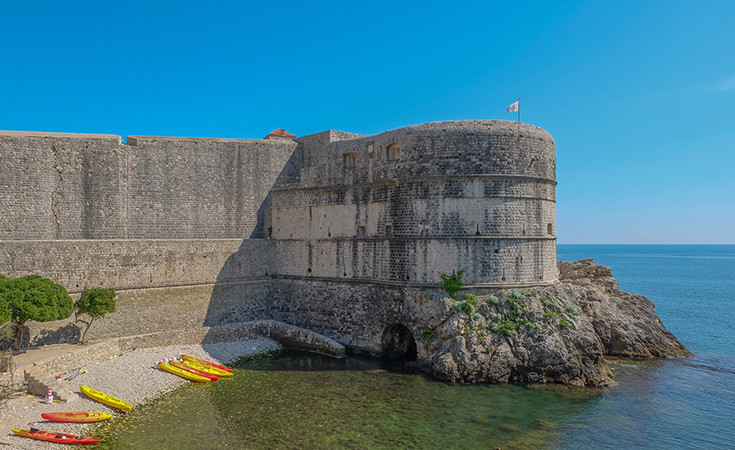
The City Walls of Dubrovnik once defended the city from attackers, but today it represents the most important landmark of Dubrovnik. The walls were constructed in the middle ages and they consist of the main city wall, three fortresses, six bastions, sixteen towers, and the two city drawbridges, Pila and Ploča, which would be raised during the night, thus sealing the city off. The walls have a total of five entrances: the doors of Ploča, Pila, Buža, Ponte, and Ribarnica. The medieval fortification is best explored by taking a walk along the two kilometers of path running along the walls and fortresses. The walls are 1940 meters long, and numerous notable builders took part in their construction, which all tells of the glory and wealth the Republic of Ragusa once boasted. The average thickness of the walls is between four and six meters. Some of the builders of the walls, unfortunately, remain unknown to us today.
Of the five fortresses located in Dubrovnik, there are three which are integrated into the city walls: Minčeta, Bokar, and St. Ivan. The Minčeta is located at the highest point of the city and was once used to defend the city from the north. Minčeta is a symbol of the defence of Dubrovnik, and the national flag waves on its walls all year round, apart from during the summer, when the Libertas flag takes its place. The Bokar fortress is positioned in the southwest, on the corner of the wall.
This fortress, also known as the Zvezdan, was erected in the 15th century to protect the city’s southern side, as well as the Bridge of Pila. Today, this part of the fortress serves as a lapydarium. The Fortress of Saint Ivan was the first square fortress of Mula, and it was constructed in 1346 to protect the city pier from the southeast. The ground floor of the fortress contains an aquarium, whereas the first and second storeys are reserved for a maritime museum. Beneath the fortress, there is a large dock with a lighthouse, a pedestrian zone, as well as a swimming zone. Every new step taken walking the pedestrian zone uncovers something new to the onlooker, and the view of the city and the sea is truly breathtaking.
The city walls are a symbol of Dubrovnik and we highlz recommend you visit them, not only because of their historical significance and beauty, but also for the spectacular view that they offer.
Author of the text:

Ana Lazarević - our correspondent for Dubrovnik
Contact: [email protected]